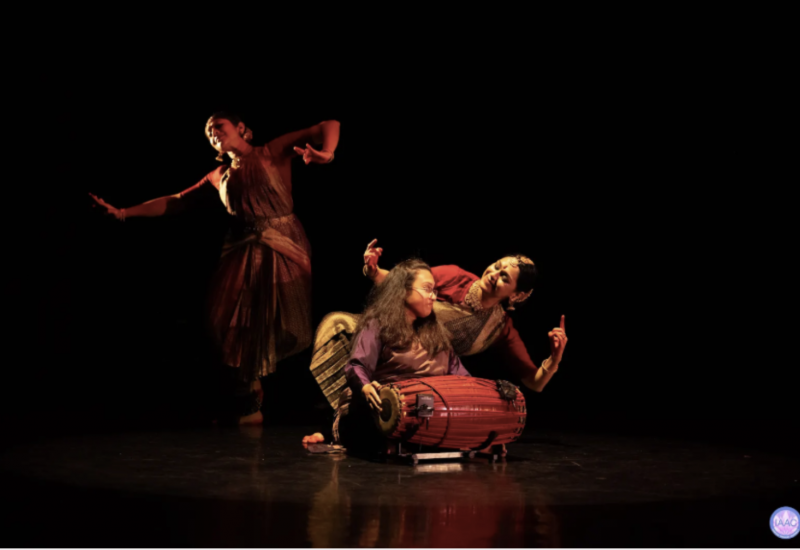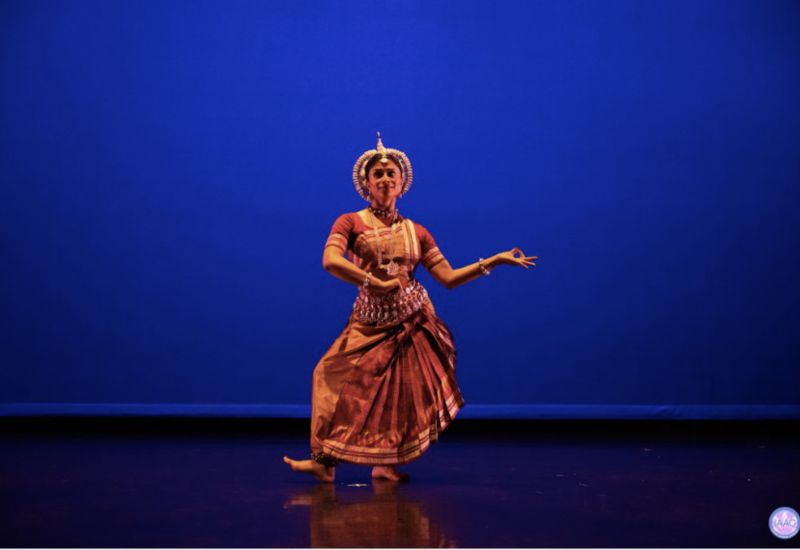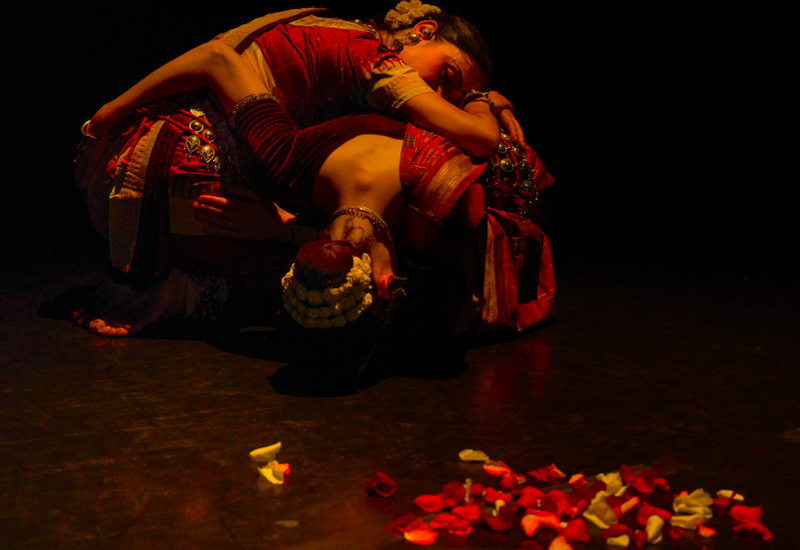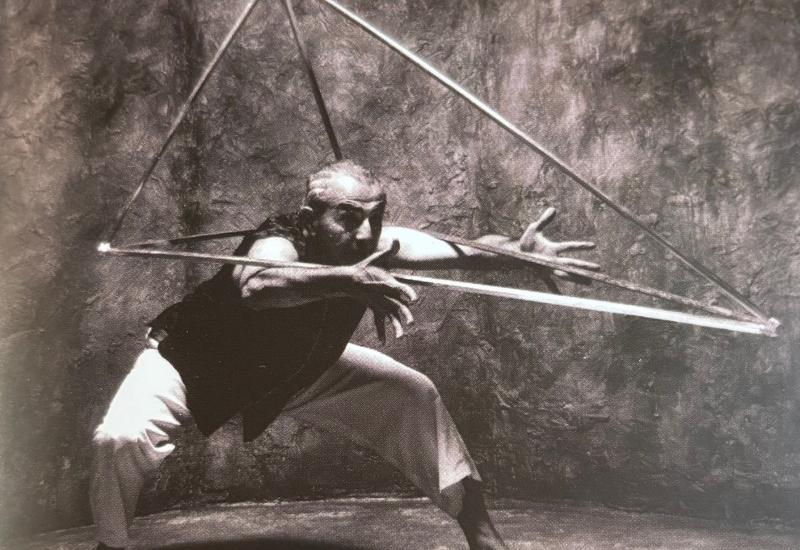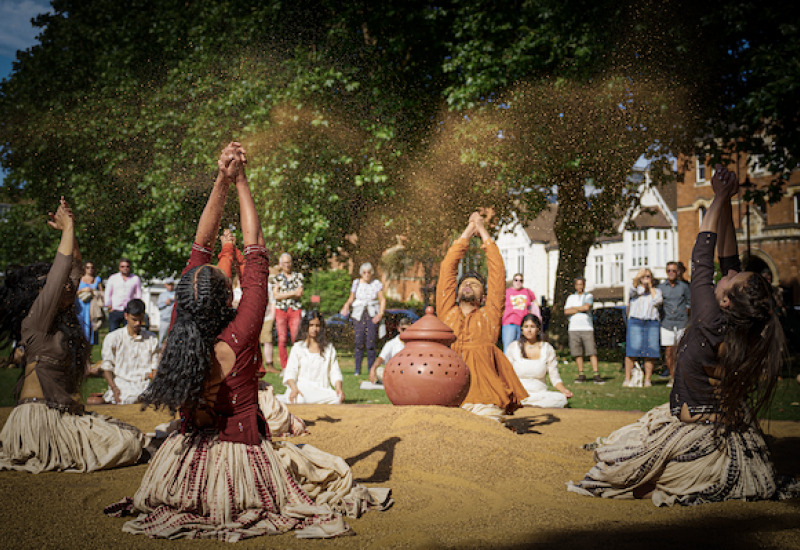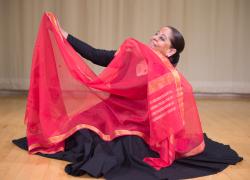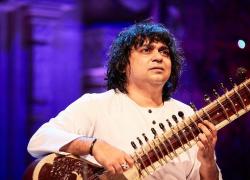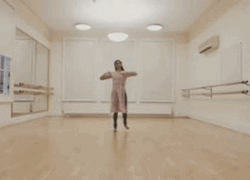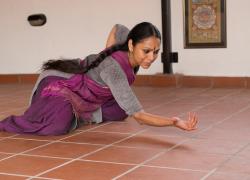Caste Away: From Devotion to Heresy Prathiba Batley
30 August 2025
Robinson Theatre, Cambridge
Reviewed by the Pulse Team
The title is deep and its scope is ambitious. The opening film, first with the image of the revolving Nataraj, followed by an introduction to the background and history of Indian dance, sets up certain expectations as it challenges the received wisdom of the ‘dance of temples’ that ignores the influence of folk and tribal and social dances.
Dr Batley commenced with the ‘Shloka Vande Mataram Ambika Bhagavati’, which was followed by the famous invocation to the Devi (Shri Chakraraaja Simhasananeshwari). Even though it fits the title ‘from devotion’, the invocation felt somehow disappointing because it is so traditional. Perhaps it was not necessary to start with an example of a devotional piece, because this is the familiar approach.
In a choice that departed from the conventional sequence in a traditional Margam, Dr Batley then chose to present Aduvum Sholluval (Saurashtram, Aadi), another well-known composition by the renowned composer Subbarama Aiyyar.
Her centrepiece came in the form of a poem from the Sangam literature. Dr Batley chose to frame it in the form of a Pada Varnam for the purposes of this recital. The lyrics were selected verses from Netunalvatai, a 188 line poem that describes two highly contrasting scenarios — a distraught queen awaiting her beloved king's return from war on the one hand, and the rousing, disturbing, and frenzied atmosphere of the battlefield itself on the other. The varnam is very long (all varnams are) and is very physically challenging – a dancer needs to be at the peak of their performance ability. Although the stills show postures which are held convincingly, in performance it felt under power. Her abhinaya, however, was excellent.
The second half of her recital commenced with the screening of Dr Batley's dance film titled 'Dirty Secrets'. This was a deeply moving, powerful, and intensely personal narrative that spoke of sexual violence, identity, integrity, and safety. Beautifully shot with wise choices of camera angles, spoken word poetry, costumes, and makeup, this short film proved to be the highlight of her endeavour. Text, the dance and visuals all came together. The intelligence of the dancer, her bravery in naming the unnameable, the imagery and filming made a powerful impact.
Following the film was a composition that highlighted the flamboyance and vibrancy of the Kuravanji folk tradition of South India. Dr Batley closed her recital with a traditional Mangalam. The final piece honouring the dancer outside of the ‘classical’ tradition showed the dancer enjoying herself in the freedom of being liberated from the shackles of classical dance.
The structuring of the recital was unique. Faithful to the title of the performance, Dr Batley traversed the path from the traditional to the unconventional. However, it would have been wonderful to be allowed a peek into Dr Batley's thought process that had dictated compositional choice. What inspired her to start and finish with traditional compositions? What dictated the sequencing of her Margam? Aduvum Sholluval, for instance, is an episode from the life of a Nayika who discovers that she now plays second fiddle to another woman who would once beg her for favours. In essence, the Padam says that the other woman is enjoying her privilege only thanks to the new attention she's receiving from the hero (the Nayika's beloved, Lord Muruga). Moreover, it says this through the voice of the Nayika (a woman herself). Which makes one wonder, does the Padam truly celebrate agency, inclusivity, and the feminine? Or does it use the archetype of the typical woman to laud or highlight the influence of the man in the picture? It would have been interesting to hear the motivation behind why this piece was chosen to be part of this Margam.
As an extension of this thought, it would have been possible to connect more intimately with the heartbeat of this production had we been offered a glimpse into Dr Batley's personal entry points into each of the pieces.
A special mention must be made for the audio-visual inserts that Dr Batley had shot that offered insights into the details of Netunalvatai. Filmed against the serene backdrop of the Scottish landscapes, it set the tone for the poem that spoke of love and war. Her commentaries which preceded each piece were well delivered and engaging.
The lighting design by Victor Paulraj was effective, and the workshops offered as part of the project were welcome.
We hope to see more of Dr Batley’s work in the UK in the future. The dancer needs to use her formidable intellectual skills to realise her ideas, perhaps with a small group of dancers on whom she can create choreography starting with short pieces. The dancer’s ambition to challenge caste is commendable, but to achieve that something within the dance form also has to change.She needs to play with the form, with a deconstruction and re-assembling of the building blocks. The film ‘Dirty Secrets’ should be screened widely across the country — it is a visual spectacle and a powerful story that needs to be experienced as widely as possible.
________________









